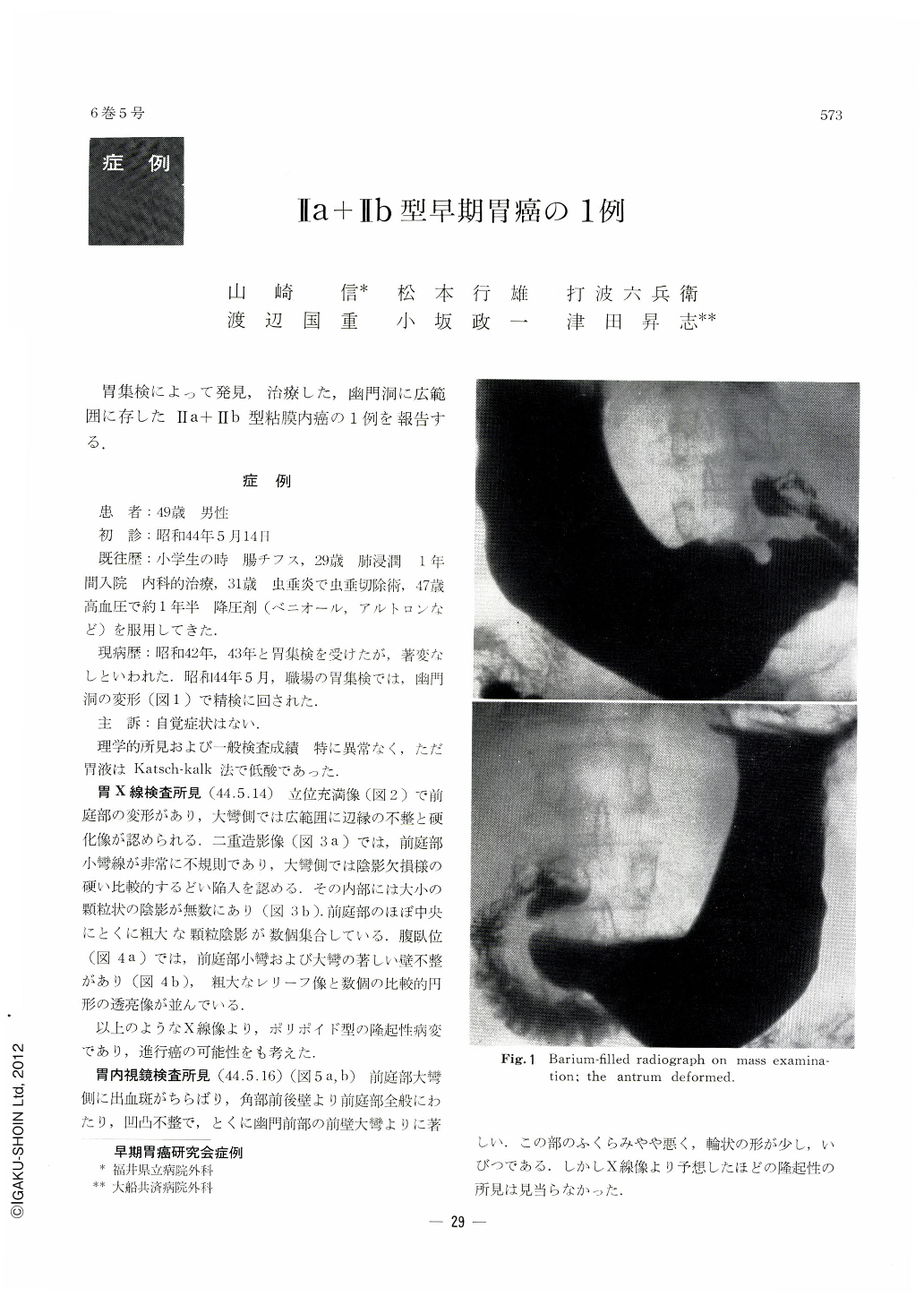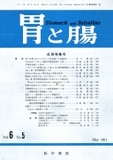Japanese
English
- 有料閲覧
- Abstract 文献概要
- 1ページ目 Look Inside
胃集検によって発見,治療した,幽門洞に広範囲に存したⅡa+Ⅱb型粘膜内癌の1例を報告する.
A case of intramucosal cancer of type Ⅱa+Ⅱb which has widely spread throughout the wall of the antrum is reported. This case was discovered by a radiological mass examination of the stomach and cured by gastorectomy.
A 49-year-old man, who had no complaints, was pointed out as having the deformed antrum of the stomach at the radiological mass examination in May 1969. The patient was subsequently admitted to the Fukui Prefectural Hospital for closer examination.
The Barium-filled radiograph of the stomach revealed both an indentation resembling a filling defect of the greater curvatur and irregularities of the lesser curvature of the antrum. On the double contrast study there were many granular shadows in the antrum which were varying in size. Some of them were clustered forming flower-like appearance. These findings were interpreted as showing advanced cancer protruded widely in the antrum.
The endoscopic examination revealed uneven and irregular mucous membrane of the whole antrum which was particularly prominent in the anterior wall but the change was not so protruded as was anticipated by the x-ray study. Then, the operation was carried out under the diagnosis of early gastric cancer of type Ⅱa in the anterior wall of the antrum near the greater curvature accompanied with pronounced atrophic hyperplastic gastritis.
A gross specimen of the resected stomach showed three slightly elevated lesions resembling Ⅱa type of early gastric cancer in the lesser curvature and the anterior wall of the stomach. The color of these lesions was the same as the other parts of the stomach. Histologically, there was a widely spread intramucosal cancer of Ⅱa type measuring 11.0×6.5 cm, which, in part, changed to Ⅱb type and it invaded most part of the wall of the antrum. Metastasis to lymph nodes was not proved.
In this case, the raised lesion on the anterior wall near the greater curvatured produced a shadow like a filling defect in the x-ray film and made it possible to discover it at the mass examination. It appears that in this case the x-ray study showed more precisely the character of the lesion than the endoscopic one and the changes in the gastric area may give an important clue for finding a lesion of type Ⅱb.

Copyright © 1971, Igaku-Shoin Ltd. All rights reserved.


